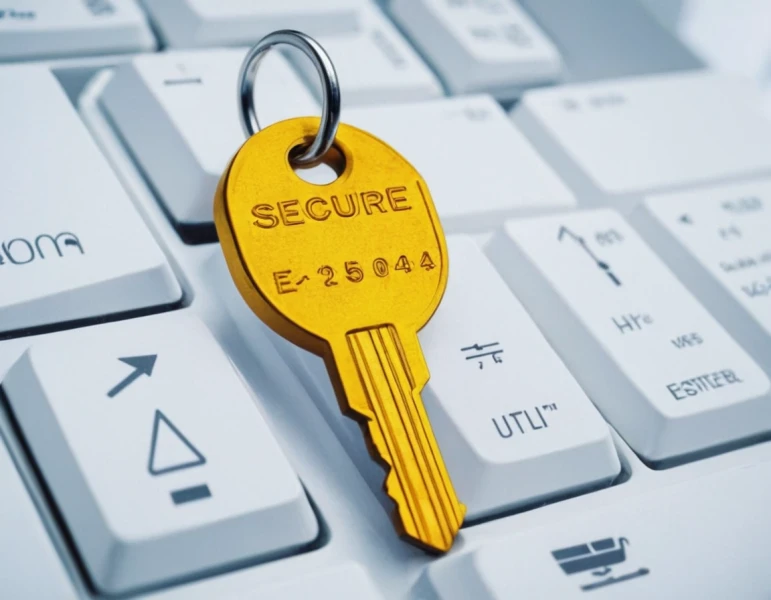Educa UNIVERSITY|BUSINESS
Secure Electronic Commerce (CES) Key: Where is the key to everything?
Secure Electronic Commerce (CES) Key: Where is the key to everything?
Hello! I'm Carlos Hidalgo, and if you're reading this, you're probably looking for how to protect your online purchases. Let me tell you that you've come to the right place. I've been working for years in the world of e-commerce and online security, and believe me, I've seen it all. Today I want to talk to you about something that should be key for you (redundancy aside): Secure E-Commerce (CES).
Before we start, I want you to think about this: how many times have you hesitated before putting your card details in an online store? One? Five? Every time? Well, that concern is not for less, since protecting your information on the Internet is more important than ever. And that's where the Secure E-Commerce Key comes into play.

What is the Secure E-Commerce Key (CES)?
The CES, as many call it, is a two-factor authentication system that adds an extra layer of protection when you shop online. Not only does it ask for your card details, it also asks for additional confirmation, either via a PIN or a numeric code that your bank sends you via SMS or even via biometrics (fingerprint or facial recognition, which is the shit!).
The objective of the CES is to prevent the fraudulent use of cards in online commerce, something that all of us who work in this field value highly. To make my point: it is no longer enough to have your card number and security code; now, with CES, the user also needs to confirm his identity with a key that only he (and his bank) knows.
Where is the key?
Let's get down to business: How do you get this Secure E-Commerce key? Each bank has its own protocol, but most follow a fairly simple pattern. You register with your bank and, if you haven't already done so, you must apply for your CES. Some entities use an additional PIN, while others prefer to send you a code by SMS every time you make an online purchase. This is all thanks to the famous PSD2 regulation, which requires you to use at least two factors of authentication.
For example, in my experience, Openbank asks you to enter a code that arrives on your mobile along with the CES key when you are paying online. Other banks send you directly to their website to verify the purchase and then approve it with your fingerprint or facial recognition if you have your device set up.
The importance of CES in e-commerce
Why is this so important? Well, as an e-commerce owner, having a secure payment system like CES is vital to build trust with your customers. Otherwise, many will not complete the purchase as they feel they are at risk of being victims of fraud. And I can tell you that, in my experience, trust is everything. Sometimes, a single transaction can be the difference between building customer loyalty or losing them forever.
Also, from the customer side, the CES protects you 100% against fraud. If someone tries to use your card without your permission, without that second authentication factor, they won't be able to complete the transaction. This means less headaches for you and less losses for merchants.
How to set up the CES Key in your online store
If you own an online store, it is important that you implement the CES system on your website. Here are some steps I have personally followed to activate it:
Choose a payment provider that supports Secure eCommerce. Not all do, so be sure to check this. Providers like Shopify Payments already have this covered.
Implement credit or debit card payments. Remember that CES is only activated if you accept these types of payments on your e-commerce. Fortunately, most payment platforms already integrate this automatically.
Enable two-step authentication. Once set up, customers will see the famous little window asking for their CES code when they make a purchase, which will give them much more confidence to proceed.
Advantages and disadvantages of using CES
Advantages:
- Maximum security. As I mentioned before, CES offers you a double layer of security, protecting you from unauthorized transactions.
- Increased customer confidence. Users feel safer shopping in stores that have these systems in place.
- Compliance with regulations. If you operate in Europe, PSD2 regulations require the use of two-step authentication, so you ensure you are aligned with the law.
Disadvantages:
- Friction in the checkout process. Some users find it inconvenient to have to verify their purchases each time, which can lead to cart abandonments.
- Compatibility issues. Not all payment platforms are CES ready, so you might face some technical difficulties when implementing it.
Final tips to protect your online shopping
We know that CES is not the only security measure, but it is one of the most effective. That said, here are some additional tips you can apply to be even safer when shopping online:
- Shop on sites with HTTPS. That little padlock next to the address bar is not just decoration; it means the site has a secure connection.
- Use private networks. Avoid shopping on public WiFi networks such as those in bars or airports.
- Update your devices. An outdated mobile or PC is an easy target for hackers.
In short, the Secure eCommerce key is one of the best tools to protect both buyers and sellers in the vast world of e-commerce. And if I'm honest, I can't tell you how many times it has saved my bacon, both in my personal and professional life.
Faculties
Trainings
The faculties embrace diverse academic disciplines and fields of study, opening doors to new perspectives and exploring different spheres of wisdom in a constantly evolving world.



